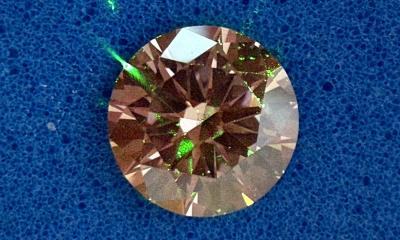DIEP flap reconstruction
In France, every year 15,000 women undergo complete or partial mastectomy due to breast cancer. Only about a third of them, i.e. around 5,000 patients, use the possibilities reconstructive surgery offers and 70 percent of those women opt for an implant although it is associated with a risk of infection because the body might react negatively to the foreign object.


In addition, follow-up surgery may be required due to symmetry problems and capsular contracture.
Deep inferior epigastric perforators (DIEP) flap surgery is an autologous and muscle-sparing reconstruction procedure without an implant. The method, which originated in the USA, is taking hold in Europe.
DIEP, pioneered by Professor Laurent Lantieri, who has made headlines with spectacular face transplantations, has been performed in France for more than ten years. In early 2012 Professor Lantieri opened a research centre for breast treatment and reconstruction at Hôpital Européen Georges-Pompidou in Paris.
Among the physicians trained in DIEP flap reconstruction was Dr Pierre Perrot, physician at the Burn Centre and Plastic Surgery Department of the Nantes university hospital, who has performed the intervention in Nantes for the past year.
During our European Hospital interview with Dr Perrot, he said that the procedure has proved successful. ‘Today, we perform it about once a week and in the past twelve months we’ve had approximately 40 patients. At this point, we cannot schedule more interventions because we would need more trained surgeons here in Nantes.
‘One advantage of DIEP,’ he explained, ‘ is the fact that the procedure does not require an implant. It’s also a muscle-sparring technique whilst the Latissimus dorsi flap technique, or TRAM flap – a precursor of DIEP – require the removal of a muscle. In DIEP surgery, skin, fat and perforator vessels are harvested from the abdomen. However, unlike TRAM flap surgery, the rectus abdominus muscle remains intact and the abdominal wall is not damaged. Thus abdominal strength is preserved and the likelihood of a hernia, often a consequence of TRAM, is lessened.
‘Basically the tissue removed in an abdominoplasty will suffice for the breast reconstruction. That means patients may even benefit from a flattened tummy.’
Breast reconstruction in DIEP
‘After removal of the perforator flap, microsurgical procedure connects the flap to vessels, chest or armpit skin. This step holds the highest risk, since the vessels are only about one to two millimetres wide. In five percent of patients this is where the procedure fails. If the vessels can be successfully attached, DIEP as such, will probably be successful. In a follow-up procedure a few months later, we see flap improvements and reconstruction of the nipple-areola complex.’
‘The procedure is not suited for patients who underwent previous abdominal surgery because their abdominal tissue cannot be used. Smoking is a further contra-indication, as is severe obesity. The patient, however, does not have to be very thin; quite on the contrary a little tummy is an advantage.
‘DIEP is exclusively performed following a mastectomy and in some cases both breasts can be reconstructed in one session – particularly in cases of prophylactic mastectomies where the patient is genetically disposed to developing breast cancer.’
18.11.2013











